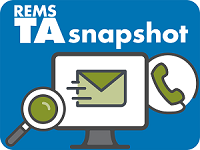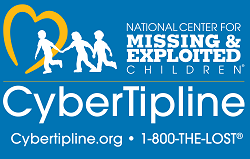

Keeping Students Safe Online During School at Home
Administrators, educators/faculty, staff, students, and families across the nation have responded to the coronavirus disease 2019 (COVID-19) pandemic and transitioned to the “school at home” setting. You have our sincerest gratitude, and we applaud your daily efforts. This shift to students learning and teachers/faculty teaching from home is an example of continuity of teaching and learning services (#COOPTeachandLearn), a critical component of continuity of operations (COOP) planning for education agencies. Distance education has dramatically increased the use of digital learning formats across the nation, and, since students are online more, they are vulnerable to more threats. Such threats may include an increase in cyberbullying, inappropriate content, sexting, sextortion/ransomware, oversharing, and online predation. Phishing emails, text messages, and scams with COVID-19 themes are currently trending.
With sincere appreciation, the U.S. Department of Education (the Department), Office of Safe and Supportive Schools (OSSS) and its REMS TA Center thank the education community and its school safety partners, including families, for your continued service and dedication to the safety of your students during this challenging time. To support you with protecting youth in all settings and all times, including online and during “school at home,” the REMS TA Center created two resources on this critical topic during the COVID-19 pandemic. Cyber safety is a shared responsibility of students, families (children, youth, parents, and guardians), and school personnel, and so we encourage you to review the other free trainings and products that may assist you as you lead your whole school community into a culture of preparedness; responsible, safe, and secure digital citizenship; and #SchoolSafetyAtHome.
Cyber Safety Quick Links for Protecting Youth: Empowering Students to Become Responsible Digital Citizens and Engage Online Safely
This Technical Assistance (TA) Snapshot provides key preparedness and response considerations for COVID-19 and gives school safety teams, families, and students key practical steps and quick links to Websites offering cyber safety resources, tools, and training. Together, communities, led by school safety teams, can enhance their cyber safety knowledge and capabilities of the whole school community by using this new TA Snapshot.
Dear School Safety Partner: Cybersecurity and Cyber Safety
In this TA Snapshot, the REMS TA Center describes cybersecurity for schools and steps education agencies can take, with the collaboration of parents, to protect student privacy while increasing the use of digital learning and video-sharing platforms in response to COVID-19. School safety teams can learn about threats facing school and school district networks and systems, as well as REMS TA Center resources in the context of cyber threats in the school setting, in this new TA Snapshot.
TA Snapshots
The REMS TA Center is pleased to introduce a new type of publication: “TA Snapshots.”
 We regularly respond to direct requests from school administrators and staff, district administrators, state education agency and regional education agency personnel, educators, parents, students, school safety leaders, and community partners on a variety of topics within school safety, security, and emergency preparedness. Such inquiries have resulted in the creation of TA responses and snapshots. Find a complete list of TA Snapshots on our Publications & Guidance Documents Web page.
We regularly respond to direct requests from school administrators and staff, district administrators, state education agency and regional education agency personnel, educators, parents, students, school safety leaders, and community partners on a variety of topics within school safety, security, and emergency preparedness. Such inquiries have resulted in the creation of TA responses and snapshots. Find a complete list of TA Snapshots on our Publications & Guidance Documents Web page.
 CyberTipline
CyberTipline
The National Center for Missing and Exploited Children maintains a free national tipline for people to report any threats. The CyberTipline can be contacted in the following ways: call 1-800-843-5678 or visit https://report.cybertip.org/.
Emergency Operations Plan Enhancement
Actual emergencies often provide new information that can be used to inform emergency operations plans (EOPs). COVID-19 and the recent transition to school at home highlight the need to review and update Cyber Annexes that address safety and security before, during, and after possible incidents. We encourage you to remember that the review, evaluation, revision, and continual enhancement of EOPs are best done by a collaborative and multidisciplinary group that has roles and responsibilities in implementing the plan and creating related policies and programs. Use our online training opportunities and resources below that we created with Federal partners and practitioners to learn more about Cyber Annexes.
- Cyber Safety Considerations for K-12 Schools and School Districts | REMS TA Center. Read this fact sheet for information on online threats to students, preparing for online threats to students, and cyber safety’s relation to EOP development and planning.
- Cybersecurity Considerations for K-12 Schools and School Districts | REMS TA Center. Read this fact sheet for information on threats facing school and school district networks and systems, preparing for threats, and cybersecurity’s relation to EOP development and planning.
- Webinar: Integrating Cybersecurity With Emergency Operations Plans (EOPs) for K-12 Schools | REMS TA Center. Learn the importance of cybersecurity and network protection at schools and school districts.
- Cybersecurity Considerations for Institutions of Higher Education | REMS TA Center. Read this fact sheet for information on threats facing higher ed systems and networks; preparing for, responding to, and recovering from threats; and cybersecurity’s relation to EOP development and planning.
- Webinar: Integrating Cybersecurity With Emergency Operations Plans (EOPs) for Institutions of Higher Education (IHEs) | REMS TA Center. Learn about the importance of cybersecurity and network protection at colleges and universities.
-
 Addressing Adversarial- and Human-Caused Threats That May Impact Students, Staff, and Visitors | REMS TA Center. Access resources from the REMS TA Center, U.S. Department of Education, and Federal agency partners on the topic of planning for adversarial- and human-caused threats, such as cyber safety and cybersecurity, within K-12 schools and institutions of higher education.
Addressing Adversarial- and Human-Caused Threats That May Impact Students, Staff, and Visitors | REMS TA Center. Access resources from the REMS TA Center, U.S. Department of Education, and Federal agency partners on the topic of planning for adversarial- and human-caused threats, such as cyber safety and cybersecurity, within K-12 schools and institutions of higher education.
Emergency Exercises
Conducting exercises is an integral part of school safety and is one of the most effective ways to evaluate the EOP and emergency procedures. The more a plan is practiced and tested and the more stakeholders are trained on the plan, the more effectively the whole school community will act before, during, and after an emergency to lessen the impact on life and property. The exercise continuum (e.g., tabletops, simulations, drills) provides opportunities to practice with community partners, validate courses of action, and identify any gaps and weaknesses in the plan. Ideally, education agencies will create an exercise program and related training program, building from a discussion-based exercise, such as a tabletop exercise, up to an operations-based exercise, such as a drill or functional exercise. Not only do exercises promote school and community preparedness, but they also help develop and foster effective relationships with community partners, clarify the roles and responsibilities of school staff and community partners, assess the availability of resources and capabilities to respond to emergencies, and identify areas in need of improvement.
- Integrating Drills and Exercises Into Overall School Emergency Management Planning | REMS TA Center, U.S. Department of Education, and Federal Emergency Management Agency. Learn about planning for and executing drills as a part of overall EOP development.
- Emergency Exercises Package | REMS TA Center. Conduct a tabletop exercise with this package that contains instructions, scenarios/injects and podcasts, and supplemental resources.
- Preparing for a Cyber Security Breach Before One Occurs: University of Southern Mississippi National Center for Spectator Sport Safety and Security’s Cyber Security Tabletop Exercise | REMS TA Center. Read about the development and implementation of a cybersecurity scenario as a part of a tabletop exercise and the institution of higher education’s lessons learned.
-
Tool Box | REMS TA Center. Access tools developed by school and higher ed emergency managers across the country via this virtual library:
- University Cyber Attack! Tabletop Exercise | University of Alaska Anchorage
- Cyber Safety for Parents/Guardians and Children | Wisconsin Department of Public Instruction and Wisconsin Department of Justice
-
Cyber Security Tabletop Exercise | University of Southern Mississippi
Facilitator’s Manual
Participant’s Manual
- University Cyber Attack! Tabletop Exercise | University of Alaska Anchorage
- Cyber Breach Exercise Starter Kit | U.S. Department of Homeland Security. Obtain an exercise starter kit to conduct a cyber breach tabletop exercise.
-
 National Tabletop Exercise for Institutions of Higher Education | U.S. Department of Homeland Security. Read situation manuals and summary reports of tabletop exercises for institutions of higher education that took place on campuses in Utah and Indiana.
National Tabletop Exercise for Institutions of Higher Education | U.S. Department of Homeland Security. Read situation manuals and summary reports of tabletop exercises for institutions of higher education that took place on campuses in Utah and Indiana.
-
Failure in campus infrastructure caused by cyber-attack
Situation Manual
Summary Report
-
Cyber threats
Situation Manual
-
Failure in campus infrastructure caused by cyber-attack
- Leadership Tabletop Exercise Cybersecurity Overview and Resource Guide | U.S. Department of Homeland Security. Find information about this half-day tabletop exercise for institutions of higher education that took place in North Dakota.
